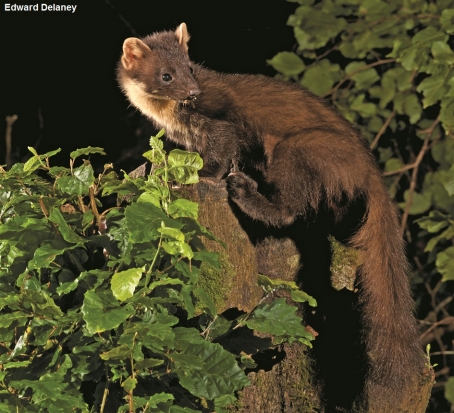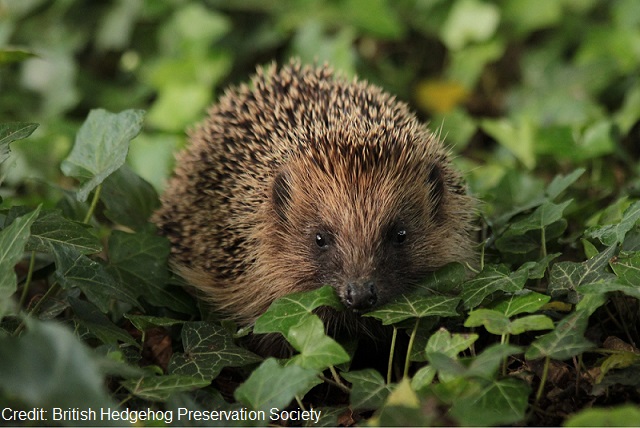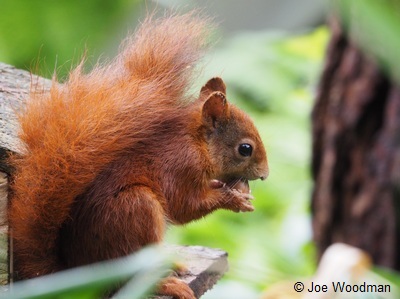By Alessandro Allegra, doctoral candidate in science and technology studies, UCL
Over the last two days of September 600 scientists, policymakers, and knowledge brokers from all over the world gathered in Brussels to discuss how to improve dialogue between science and policymaking.
The global conference, organised by the European Commission and the International Network for Government Science Advice (INGSA), started from a very simple premise: as science and technology inform our understanding of the world, and permeate all aspects of our lives, how do we ensure they are best embedded into effective policymaking?
Although no simple and straightforward answer to this questions exists, several important points were made during the two days of discussion that can contribute to a better understanding of the process of scientific advice to policymaking. Here I discuss a few that I found particularly interesting. Read more


 My first encounter with a pine marten in the wild was back when I was a first year zoology undergraduate. I was poised upwind of a badger sett with my binoculars, waiting for the badgers to emerge, when the most beautiful animal I’d ever seen crossed my field of view. It was a pine marten. It stopped, stood up on its hind legs and sniffed the air, revealing the characteristic apricot bib, and then went on its way. From that moment on I was hooked.
My first encounter with a pine marten in the wild was back when I was a first year zoology undergraduate. I was poised upwind of a badger sett with my binoculars, waiting for the badgers to emerge, when the most beautiful animal I’d ever seen crossed my field of view. It was a pine marten. It stopped, stood up on its hind legs and sniffed the air, revealing the characteristic apricot bib, and then went on its way. From that moment on I was hooked. The soprano pipistrelle, one of three pipistrelle species in the UK, is named due to the frequency of its echolocation: slightly higher than the closely related common pipistrelle. Although a soprano by name, this bat has little time for serenades, instead using its ultra-high frequency call to accurately pin point, and then ambush, tiny insects in mid-air.
The soprano pipistrelle, one of three pipistrelle species in the UK, is named due to the frequency of its echolocation: slightly higher than the closely related common pipistrelle. Although a soprano by name, this bat has little time for serenades, instead using its ultra-high frequency call to accurately pin point, and then ambush, tiny insects in mid-air. Bumblebees are awesome! But perhaps, being the education officer for Pollinating the Peak – a new Heritage Lottery funded project from the Bumblebee Conservation Trust – I have to say that… However, it’s not just me, my colleagues and keen entomologists, but the general public think so too. In a
Bumblebees are awesome! But perhaps, being the education officer for Pollinating the Peak – a new Heritage Lottery funded project from the Bumblebee Conservation Trust – I have to say that… However, it’s not just me, my colleagues and keen entomologists, but the general public think so too. In a 
 Biology Week
Biology Week
 Antimicrobial resistance (AMR) is one of the greatest threats facing global public health. At present, 700,000 people die from resistant infections worldwide each year. With dwindling supplies of antibiotics, no new drugs coming to market, and a lack of truly point-of-care diagnostic tests than can be used in any healthcare setting, there is a great need for novel, innovative ways to tackle the problem.
Antimicrobial resistance (AMR) is one of the greatest threats facing global public health. At present, 700,000 people die from resistant infections worldwide each year. With dwindling supplies of antibiotics, no new drugs coming to market, and a lack of truly point-of-care diagnostic tests than can be used in any healthcare setting, there is a great need for novel, innovative ways to tackle the problem. It’s that time of year again – the swallows are collecting on the telegraph wires ready to escape the cold that’s coming our way. It’s a sad spectacle for anyone lamenting the end of summer, even though they will join us again after six months and an African adventure covering thousands of miles. What about our migratory butterflies though?
It’s that time of year again – the swallows are collecting on the telegraph wires ready to escape the cold that’s coming our way. It’s a sad spectacle for anyone lamenting the end of summer, even though they will join us again after six months and an African adventure covering thousands of miles. What about our migratory butterflies though?